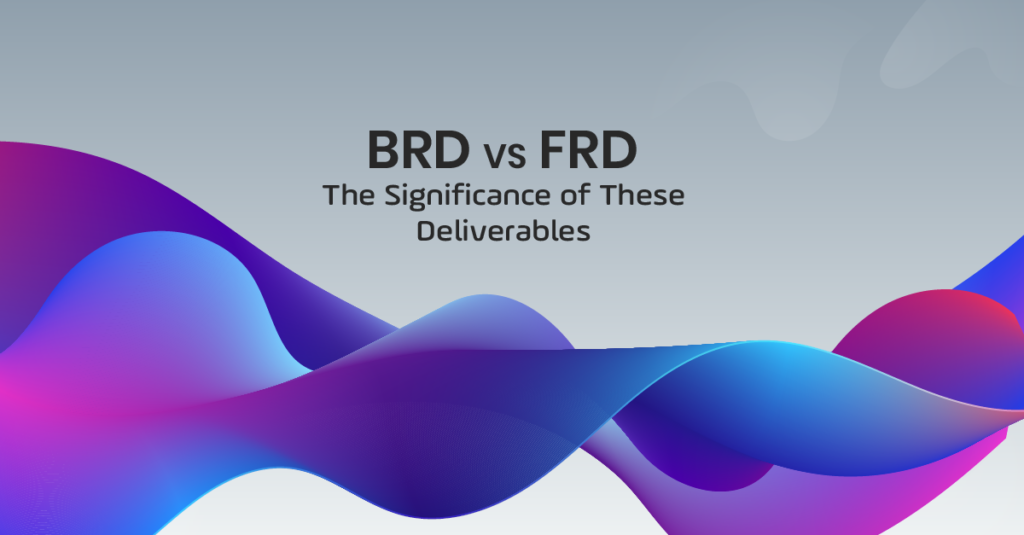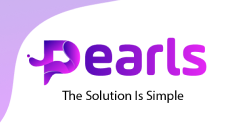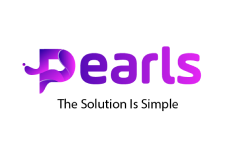
Documentation is one of the most significant parts of business analysis. It demonstrates the requirements and the detailed work and discussions on every new aspect and feature, along with all the change requests which have taken place in the project.
You certainly have heard about various types of documentation from business analysts, including Business Requirement Documents (BRD), User Stories, Use Case Specification Documents, Functional Requirement Documents (FRD), Requirements Traceability Matrices (RTM), Market Requirements Documents (MRD), Product Requirements Document (PRD), Functional Requirement Document, and Business Requirement Document.
These are all very important, but here we will deal with two of the most popular, common, and significant requirements documentation types. Let’s dive deeper into this BRD vs FRD face, where we will explore everything about Business Requirements Document (BRD) and Functional Requirements Document (FRD). Let’s get it started below.
Business Requirement Document (BRD)
BRD is crucial in highlighting the business requirements, which include the biggest goals of the business, which is why the organization is building a certain product or service. It is made to describe the very functional specifications of the software or any other product being built.
It is essential because it is a formal document that illustrates all the requirements provided by the clients or by the higher-ups of any organization. There is no particular method or tool to collect the requirements as the business analyst can get them verbally or in writing and then document them. The business analysts mostly make it, and the work is executed under the supervision of the project manager.
BRD document is considered the foundation as it establishes all the inputs and outputs of the project along with the process functions. All the project deliverables are based upon BRD as it describes the whole look of the project when it is developed from a business perspective.
Most commonly, the objectives of the Business Requirements Document template include some core business analysis functions. First, it is meant to help have a consensus with stakeholders and provide input in the project’s next phase. It also describes how the needs of the business and customers will be met in the solution being developed. It can be considered the holistic approach to all the business needs, which is meant to give value to customers using the help of the right strategy.
Functional Requirement Document (FRD)
Functional Requirements Documents, or FRDs, are mainly focused on the functionality of the software or solution, which is the end product. It gives details on the product’s functional requirements, and the complexity and length totally depend on the product, software, or solution being developed or made.
Functional Requirements Document is derived from BRD document, one of the main reasons some business analysts and project managers do not make an FRD and use BRD for both purposes. It is because BRD is more detailed and contains most FRD elements. Still, an FRD plays a sufficient role in describing the highly technical side of the product or software that is being developed.
The business analyst usually creates the FRD by collaborating with a technical expert like the System Architect, etc. However, in a small to medium size organization, the business analysts can handle the assistance of technical help as they handle the BRD, and the data acquired for that also fits in most of FRD.
When discussing the process, finding a way to avoid FRD from reaching BRD is possible. However, since BRD is more detailed and has more information, it can also serve as FRD for many. Still, there are some significant reasons why FRD is important, and it also has some clear objectives.
First, it helps depict the interlinking of all dependencies with activities and their process flows. In addition, it gives a holistic view of every requirement required to build the project. It also provides the calculated risk details associated with each new change request, along with highlighting the consequences in circumstances where the health of the project is weak.
BRD vs FRD
Now that we have seen these two important documents let’s briefly look at the points where they can be compared. Although, it is completely reasonable to argue that both the Business Requirements Document and the Functional Requirements Document are very important for business analysts and formal requirements management.
However, some projects still need to catch up on FRD because BRD already contains most of the information covered in FRD, and they utilize BRD for both. However, FRD plays a crucial role in reaching the expectancy of BRD. It is always part of every successful project, whether they use FRD with its name or merge it with BRD. This is what most people miss out on.
BRD is the requirement the client, business, or any other stakeholder provides. Now this has to be converted into action plans wherever it is required. On the other hand, the process makes that BRD into expectancy. Functional Requirement Document helps develop the expected requirements and everything relating to it, which would be needed to achieve the end product.
Final Words
In this BRD vs. FRD comparative article, it has become clear that both of these requirements documents play a crucial role in the execution of any project. Although it is considered that FRD can be covered in BRD, in reality, FRD cannot be avoided, and it is always there, either separately or as part of BRD. So, it is clear that none of the two can be avoided, and both of them are essential for proper and effective requirements management, for which business analysts play the most significant role. The documentation of these two types determines the appropriateness of requirements management in any project.





Pingback: BRD vs FRD: The Significance of These Documenta...